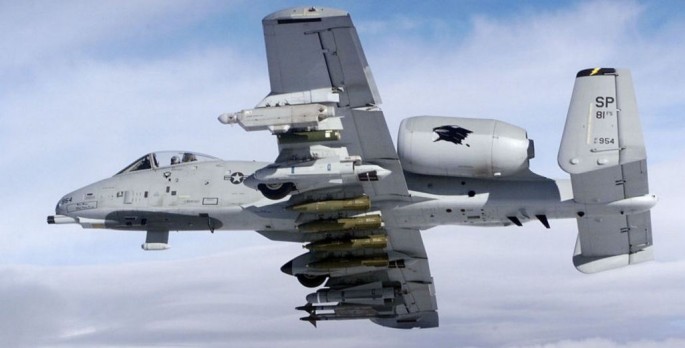The legendary Fairchild Republic A-10 Thunderbolt II "Warthog" ground attack aircraft won't be retired starting 2018, as was the initial plan of the U.S. Air Force.
Instead, this venerable close support aircraft will shoulder on, at least until 2040. The clearest sign the Warthog will continue to be a terrifying sight to those on the sharp end of its weapons is the reopening of the depot line that maintains and repairs the Air Force's 283 A-10s.
The Air Force is supposed to have begun retiring the Warthog by fiscal year 2018 beginning July. The service expects the A-10 to be completely withdrawn from service in 2022.
The plan is to retire 49 A-10s or two squadrons in FY 2018. This will be followed by 49 A-10s in FY2019, 64 in FY2020, and 96 in FY2021.
The Lockheed Martin F-35 Lightning II stealth jet is to have replaced the A-10 in the ground attack role. New Air Force studies, however, reveal the multi-million dollar F-35 won't be able to generate the required number of sorties planned.
"They have re-geared up, we've turned on the depot line, we're building it back up in capacity and supply chain," said Air Force Materiel Command chief Gen. Ellen Pawlikowski.
"Our command, anyway, is approaching this as another airplane that we are sustaining indefinitely."
The U.S. Congress had adamantly opposed the retirement of the A-10.
Senator John McCain, a former Navy pilot, and Representative Martha McSally, a former A-10 pilot, both fought hard for the Warthog in their respective Armed Services Committees against the Air Force's claims the F-35 could replace the A-10 that first entered service in 1977.
Delaying the A-10's retirement also follows trials initiated by the Air Force to determine if the F-35 or A-10 better executes the close air support role. The results indicate the A-10 came out the winner.
The Government Accountability Office (GAO) belittles the Air Force's contentions the A-10 could be replaced, arguing the plane's low flight costs, unique airframe and hyper competent, impeccably trained pilot community was without peer in the Air Force.



























